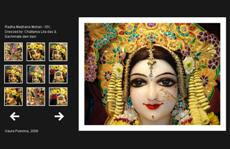 Introduction
IntroductionLet me first offer my respectful obeisances unto my beloved gurudeva, A.C. Bhaktivedanta Swami Prabhupada. Mindful of his desire to see all classes of human society included within the Vedic system of spiritual upliftment, I humbly attempt to write this book. It is also my desire to help steer readers away from the pitfalls of discrimination and hate based upon bodily distinctions, so often the trap of mundane religionists.
In modern times, there has been much controversy concerning the position and rights of gay and other third-gender groups within society. Should they be feared and eliminated as a harmful, corruptive force within our midst? Should they be ignored and hidden away, being denied the basic rights and privileges that other citizens enjoy? Or should they be welcomed as simply another color within the rainbow of human variety? The answer to these questions can be found in the ancient Vedic literatures of India, which have thoroughly analyzed and recorded all aspects of human behavior and knowledge since time immemorial.
 After the Vedas were issued forth from Brahma at the beginning of creation, Manu set aside the verses concerning civic virtues and ethics, thus compiling the Dharma Shastra. Similarly, Brhaspati set aside the verses concerning politics, economy, and prosperity to compile the Artha Shastra. Nandi, the companion of Lord Siva, set aside the verses concerning sense pleasure and sexuality, thus compiling the Kama Shastra.1 The great sage, Vyasadeva, put this Kama Shastra into writing approximately five thousand years ago along with all other Vedic literatures.2 It was then subsequently divided into many parts and almost lost until recompiled by the brahmana sage, Vatsyayana, during the Gupta period or about 300 A.D.3 The result was the famed Kama Sutra or “codes of sensual pleasure.” Although commonly presented to Westerners in the format of an erotic sex manual, the actual unabridged Kama Sutra gives us a rare glimpse into the sexual understandings of ancient Vedic India.
After the Vedas were issued forth from Brahma at the beginning of creation, Manu set aside the verses concerning civic virtues and ethics, thus compiling the Dharma Shastra. Similarly, Brhaspati set aside the verses concerning politics, economy, and prosperity to compile the Artha Shastra. Nandi, the companion of Lord Siva, set aside the verses concerning sense pleasure and sexuality, thus compiling the Kama Shastra.1 The great sage, Vyasadeva, put this Kama Shastra into writing approximately five thousand years ago along with all other Vedic literatures.2 It was then subsequently divided into many parts and almost lost until recompiled by the brahmana sage, Vatsyayana, during the Gupta period or about 300 A.D.3 The result was the famed Kama Sutra or “codes of sensual pleasure.” Although commonly presented to Westerners in the format of an erotic sex manual, the actual unabridged Kama Sutra gives us a rare glimpse into the sexual understandings of ancient Vedic India.
Three Categories of Gender
Throughout Vedic literature, the sex or gender of the human being is clearly divided into three separate categories according to prakriti or nature. These are: pums-prakriti or male, stri-prakriti or female, and tritiya-prakriti or the third sex......
galva108 Read More...
.
.jpg)
.jpg)
.jpg)

0 comments:
Post a Comment